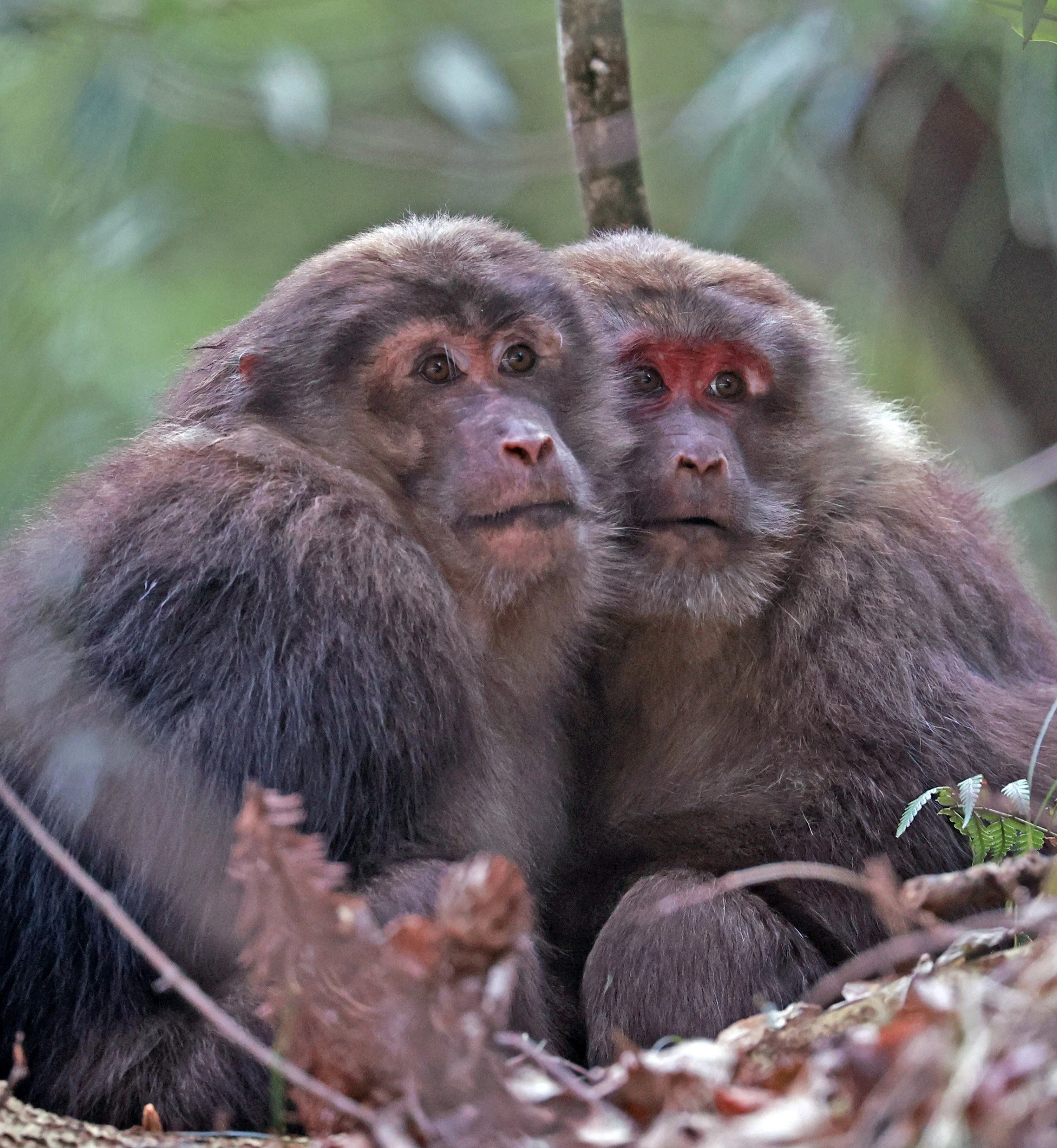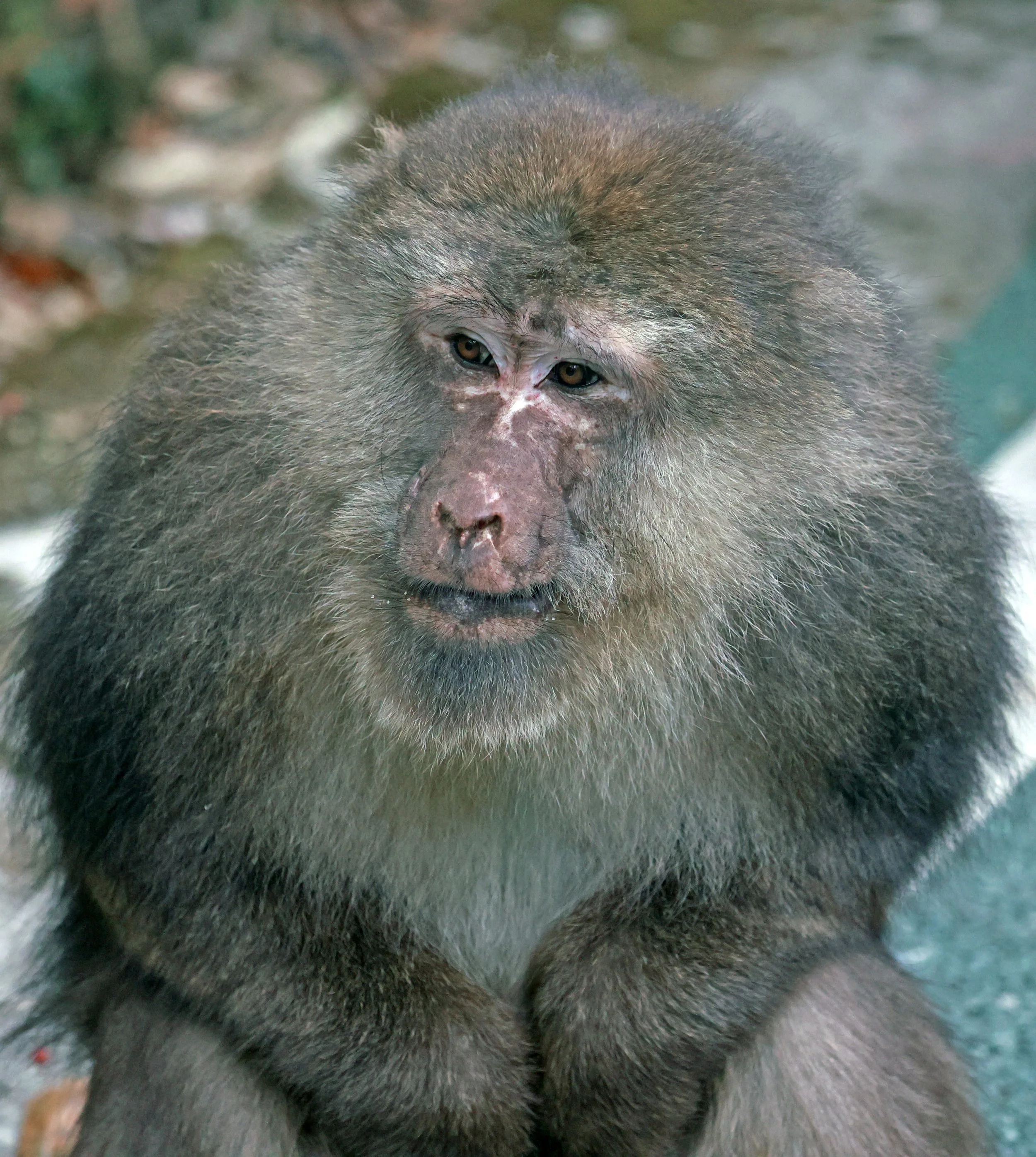
Tibetan Macaque
The Tibetan Macaque (Macaca thibetana), also known as the Chinese stump-tailed macaque or Milne-Edwards' macaque, is a macaque species found from eastern Tibet east to Guangdong and north to Shaanxi in China. It has also been reported from northeastern India. This species lives in subtropical forests (mixed deciduous to evergreen) at elevations from 800 to 2,500 m (2,600 to 8,200 ft) above sea level.
The Tibetan macaque is the largest species of macaque and one of the largest monkeys found in Asia. Only the proboscis monkey and the larger species of gray langur come close to match their size among Asian monkeys. Males are the larger sex, commonly attain a weight of 13 to 19.5 kg (29 to 43 lb) and length of 61 to 71 cm (24 to 28 in) long, with a maximum record weight of 30 kg (66 lb). Females, in contrast, weigh 9 to 13 kg (20 to 29 lb) and measure 49 to 63 cm (19 to 25 in) long. The stump-like tail adds only 4 to 14 cm (1.6 to 5.5 in), with females having a considerably shorter tail. The fur is well-suited to the species' cold environments being long, dense and brown on the back with creamy-buff to grey coloration on the underparts. Some adults are quite dark brown on the back, while others are basically a sandy yellowish-brown color. They have a prominent, pale-buff beard and long whiskers, but have a hairless face. The face is pale pinkish in males but is a more vivid, reddish-pink in females. The infants have silver-and-black fur that changes to its adult color at the age of two.
This species is classified as Near Threatened by the IUCN and is listed on Appendix II of the CITES list. Its main threats are all human-related. Principally, they are sensitive to habitat destruction, as they are tied closely to the forest. They are occasionally poisoned by herbicides and pesticides while eating and may catch diseases transmitted from humans. Illegal poaching may occur, with the flesh and the fur of the macaque being used.
Tibetan Macaque (Macaca thibetana thibetana) - Tangjiahe Nature Reserve

Tibetan Macaque (Macaca thibetana) Tangjiahe National Nature Reserve, Sichuan China 2012


































Tibetan Macaque (Macaca thibetana) Tangjiahe National Nature Reserve, Sichuan China 2024



























































































































Huangshan Tibetan Macaque (Macaca thibetana huangshanensis) Fuxi Village group at Huangshan Anhui China

































































































































































































































